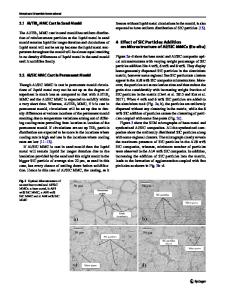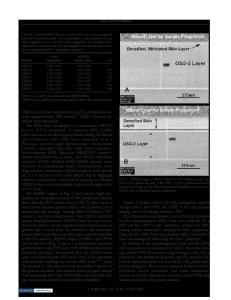Effect of in situ material properties on fatigue damage modes in titanium matrix composites
- PDF / 2,218,825 Bytes
- 12 Pages / 612 x 792 pts (letter) Page_size
- 86 Downloads / 372 Views
I.
INTRODUCTION
METAL matrix composites (MMCs) offer strength and stiffness properties that have led engineers to consider these materials for a variety of structural applications in the airframe and engine industry. In fact, they provide specific stiffness and specific strength values far superior to their metal matrix materials alone. In addition, the temperatureinsensitive ceramic reinforcing fibers, combined with temperature-tolerant metal matrices, allow these materials to be useful at temperatures exceeding the maximum usable temperatures for either monolithic metals or polymer composites. As a result, MMCs have been considered for applications ranging from stiffness- and strength-critical landing-gear components to high-temperature applications such as fuselage skin sections of the National Aero-Space Plane (NASP) and turbine blades for high-performance engine rotors.[1,2] However, before MMCs can truly be considered as viable alternatives for polymer composites, ordinary metals, and superalloys, their material behavior needs to be understood. Several types of fatigue damage modes have been observed in MMCs. These damage modes are affected by several parameters, including the applied load, specimen geometry, and material properties of the constituents and the unidirectional lamina. Fatigue loading of a titanium matrix composite (TMC) reinforced with the boron carbide (B4C)–coated boron fiber, resulted in a crack which initiated at the notch edge and propagated across the net section perpendicular to both the loading and the fibers. This type of damage initiation and progression is similar to the Mode I–type fatigue crack observed in unreinforced metals. However, fatigue loading of D. HARMON, formerly Principal Technical Specialist, The Boeing Company, St. Louis, MO 63166, is Project Engineer, Pratt & Whitney, East Hartford, CT 06108. K.L. JERINA, Chairman, is with the Materials Science and Engineering Program, Washington University, St. Louis, MO 63130. This article is based on a presentation made in the symposium ‘‘Fatigue and Creep of Composite Materials’’ presented at the TMS Fall Meeting in Indianapolis, Indiana, September 14–18, 1997, under the auspices of the TMS/ASM Composite Materials Committee. METALLURGICAL AND MATERIALS TRANSACTIONS A
an aluminum matrix composite (AMC) reinforced with the uncoated boron fiber resulted in cracks that initiated symmetrically around the hole and propagated parallel to the fibers. This type of damage is considered a Mode II–type crack, since in-plane shear stresses appear to drive the crack. In-plane shear stresses are present in the unidirectional composite because of the shear load transfer around the notch in the center of the laminate. Photomicrographs of the crack surface revealed that this crack was growing partially in the matrix material and not completely along the interface between the fiber and matrix. These cracks initiated in the matrix at angles approximately 60 deg from the top and bottom of the hole and not at the net section created by the notch. T
Data Loading...











